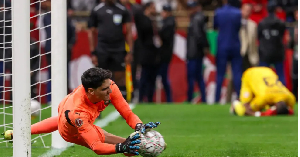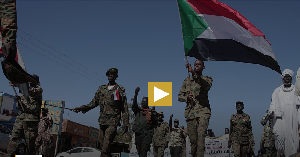Catholic Relief Services (CRS), an international non-governmental organisation, has initiated a process to develop Water Fund for Tamale as part of efforts to address water insecurity in the area.
The Tamale Water Fund (TWF) is to fundamentally change the way people in the Tamale Metropolis use and manage water for the benefit of both the people and nature by protecting where their water comes from.
This will be done through sustainable watershed management and deployment of green infrastructure/nature-based solutions to protect the White Volta River, which is the source of water for the metropolis.
The move is being championed by the CRS in partnership with stakeholders in the water supply sector in the Tamale Metropolis and The Nature Conservancy.
Dr Philip Darko, Water, Sanitation and Hygiene Consultant to CRS announced this at a stakeholders’ forum to commemorate this year’s World Water Day (WWD) in Tamale.
The WWD is a global day, commemorated on March 22, every year to create awareness on water crises and to take action for improving access to safe drinking water, especially amongst vulnerable populations.
Dr Darko said under the initiative, water source protection activities such as targeted land protection, re-vegetation, riparian restoration, agricultural land management, wetland restoration and creation amongst others would be undertaken to find lasting solutions to water supply challenges in the Tamale Metropolis.
The Ghana Water Company Limited (GWCL) draws water from the White Volta River at Nawuni for treatment to serve the Tamale Metropolis, Savelugu-Nanton Municipality, Kumbungu, and Tolon Districts.
However, there are increased sand winning activities upstream of the river in the Kumbungu District leading to degradation and siltation.
The river had also dwindled in size, and it contained a lot of dissolved particles, which meant high cost of producing water as huge amount of chemicals are used to treat the polluted water.
The GWCL said due to the high turbidity level of the river, about 30 per cent of water produced was lost at the treatment plant level because it was not good for human consumption.
Dr Darko said during the next few months, CRS intended to “engage major stakeholders at national, regional and local levels to design the model and management structure of the TWF” as well as “Facilitate the formation of steering committee for the TWF and its commissioning to lead its implementation.”
Gilbert Nuuri-Teg, Tamale Metropolitan Coordinating Director, expressed worry about the poor water supply situation in the Tamale Metropolis and lauded CRS for the initiative, which would complement national efforts to improve water supply in the area.
Mr Nuuri-Teg called on the GWCL to publish a water rationing time table for the Tamale Metropolis so that residents would know when their taps would flow to minimise the incessant complaints of water shortage in the area.
Amidu Musah, Northern Regional Chief Manager of GWCL commended CRS for providing good leadership in water sustainability and advised residents to play their roles to ensure reliable water supply in the region.
Regional News of Friday, 26 March 2021
Source: GNA













